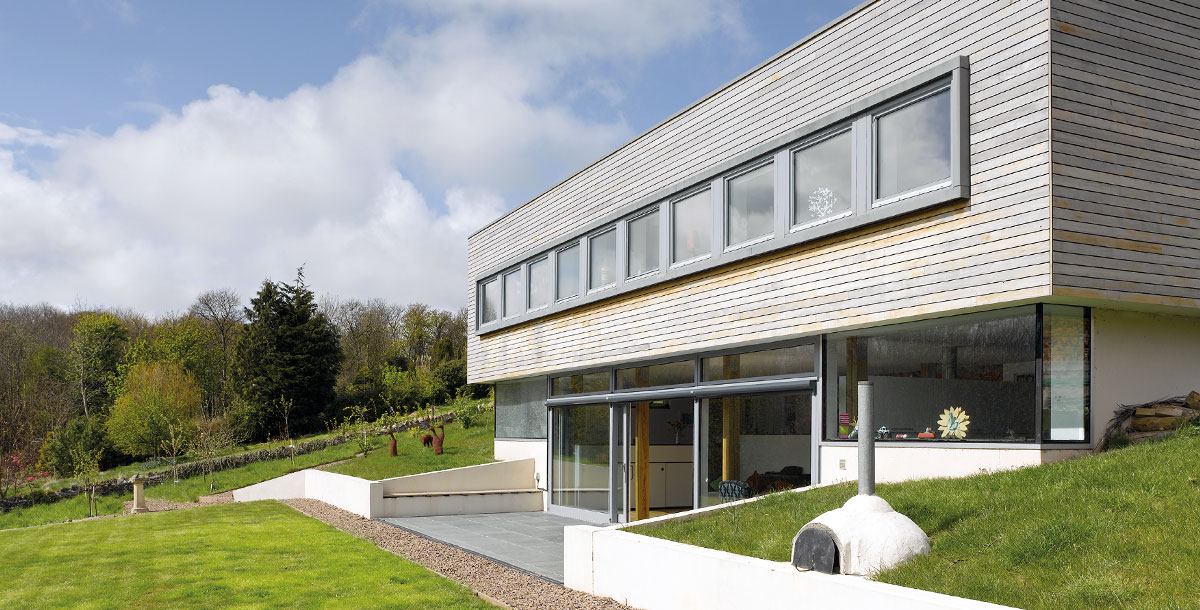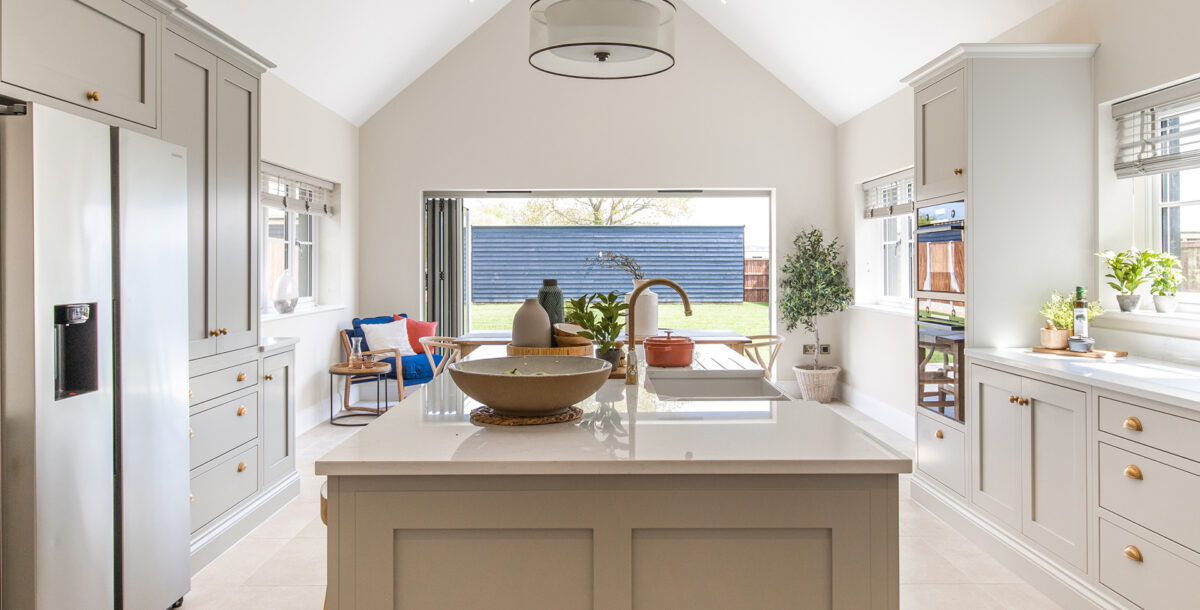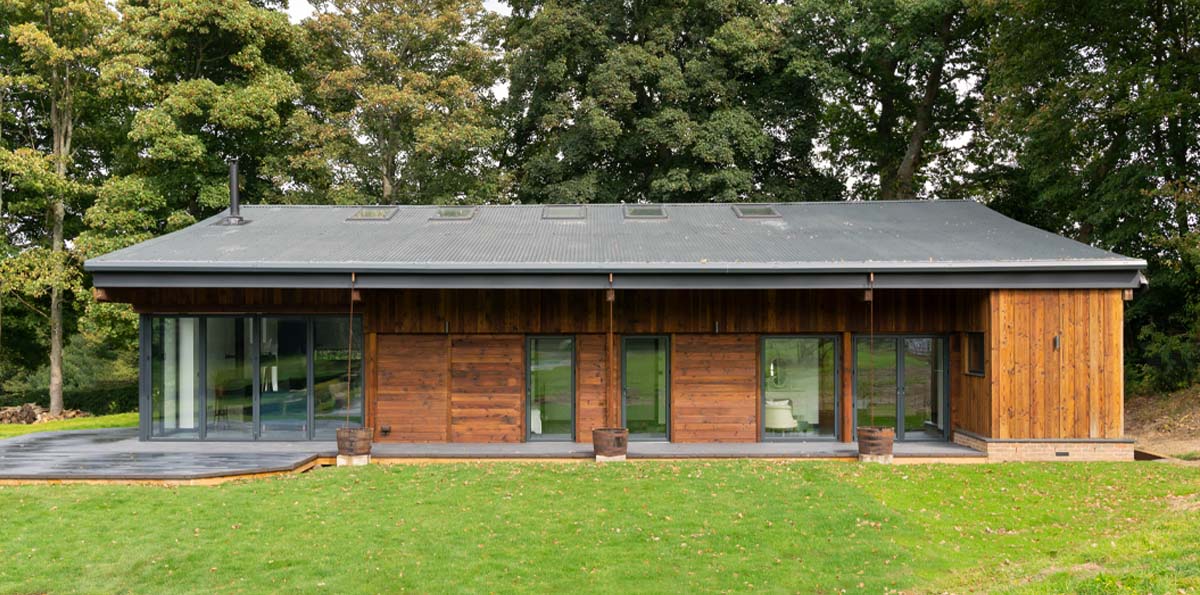The flaw in the Future Homes Standard
Kevin McCloud highlights the problem with the government’s home-building legislation
The Climate Change Committee, or CCC, is a statutory body that takes a long, hard, scrutinising look at the state of this nation and then regularly produces a warts-and-all analysis of our environmental performance in the form of its carbon budgets and reports to parliament.
It provides independent advice; it comprises some of the biggest brains on the planet. It produces targets for government and publishes cogent and sometimes complex arguments for action – all of it highly readable and easily downloadable. I recommend its reports if you’re into the detail.
The government, of course, tends not to be into the detail. It likes robust, politically charged arguments that are easy to understand, and it likes headline figures with a tabloid attention-grabbing banality. It especially likes any 10-second idea it can publish on social media.
The zero-carbon challenge
Not surprisingly, the CCC has produced its own intelligent targets for housing quality and environmental performance. The government meanwhile has produced the Future Homes Standard (FHS), trumpeting its intention to reduce energy use in all new-built homes by 75-80% by 2025 and, importantly, demanding that all such homes are low-intervention retrofittable to zero carbon.
For government policy, the FHS is not a bad stab. The objectives sound like a reasonable staging post on the way to zero carbon. The strategy is on a par with other European countries’ policies. Sort of. Except most other European countries wrote their policies years ago. Ours is way overdue. And it is fatally flawed.
The same party in government that is introducing the FHS also scrapped the Code for Sustainable Homes in 2015, a code that wasn’t perfect, but which in the first decade of this century set ambitious – and leading – targets for a whole host of environmental objectives, not just reducing carbon usage.
In the housing schemes I was involved with at the time, we were building to code levels 4 and 5 with a view to reaching the highest level, zero-carbon code level 6, by 2016. That zero-carbon challenge had been set by Gordon Brown as a twinkling star of ambition that all developers were to aim for by that date.

Joe Stuart and Lina Nilsson’s Passivhaus was built on a tiny plot in east London. Photo: Fiona Walker-Arnott
The Future Homes Standard flaw
Seven years have passed since 2016, so, by my own thumb-rule analysis through comparing U-value targets, if we’d been building to code level 6 we’d have already improved on the Future Homes Standards by up to 45%. And the FHS isn’t even planned to come into force for two years.
If you then consider Passivhaus performance standards for your build, they go even further in embarrassing the FHS. In choosing any of these routes it’s possible to argue we could already have been cutting 80% of our domestic energy needs in new housing by, perhaps, 2020. So, our policy is way overdue. A backtracking on a backtrack which, if you’re a hiker, you’ll know is the definition of being totally lost.
And here’s that fatal flaw. British construction skillsets have been hugely depleted compared to other European countries, partly due to Brexit, whereby we lost so many great European migrant tradespeople; Covid, which saw older skilled artisans take early retirement in their droves; but mainly because of a dearth of credible training in construction since the 1980s.
This is well-documented in construction consultant Mark Farmer’s 2016 report to government, Modernise or Die. So regardless of whatever standard we impose for low-carbon construction – and remember it’s low carbon in use, so all about reducing household energy bills and building properly insulated and airtight homes – if we are so inept that we can’t build to any decent quality, there’s no point even trying.
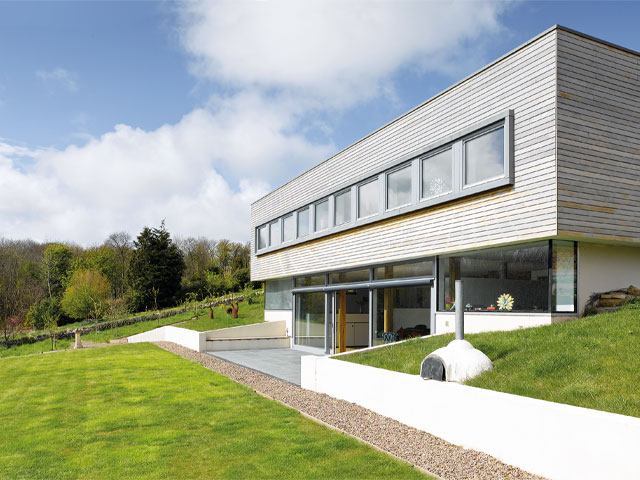
This four-bedroom Passivhaus in the Scottish Borders was built in just 12 months. Photo: Jefferson Smith
Failure to deliver
How do we know the quality is missing? Well, one of the excellent CCC papers, UK Housing: Fit for the Future from 2015, shows the costs of building high-quality, low-carbon and resilient homes are not actually prohibitive, but that there is mounting evidence pointing to a substantial gap between the theoretical performance of buildings as measured at design stage, and the actual performance when built.
It seems that the over-optimism and ‘perfect-world’ mentalities of desktop studies – as undertaken for every new building and resulting in the Standard Assessment Procedure (SAP) calculation that feeds into your building warranty when you buy a new home – bear no relation to real-world build quality and performance.
Another study looked at 25 new-build dwellings and found that the measured heat loss through the building envelope was nearly 1.5 times that predicted. By anybody’s reckoning that’s dreadful.
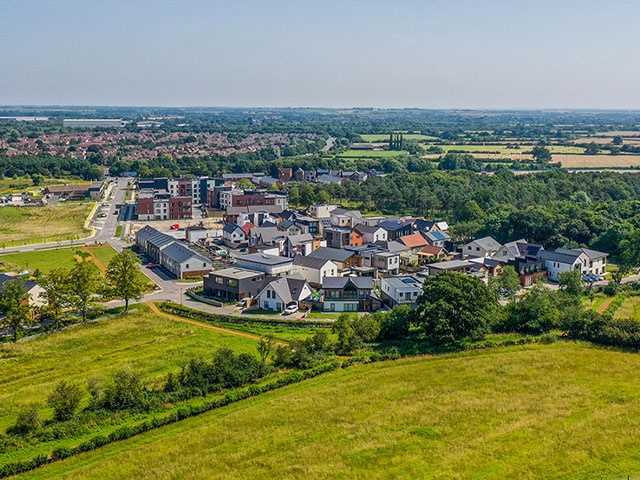
Graven Hill had a promising start as part of the self-build revolution. Photo: Beauty & Bicester
Disconcerting results
But get this, Innovate UK also ran a programme of studies on 76 homes and concluded that carbon emissions from new homes are two-to-three times higher than design estimates – before even allowing for energy use from cooking and appliances. It found significant teething problems in the first year, but even in the second year there was little correlation bet ween the predicted and actual emissions.
This points to a disaster. There is no point designing low-carbon buildings if we can’t build them; if we don’t tape and secure insulation properly; if builders and project managers don’t understand the issues of cold bridging, poor airtightness and the need not to skimp.
The housing sector and the energy we use in our homes is responsible for about 19% of all UK carbon emissions: 67.5 megatonnes of carbon dioxide (CO2) or its equivalent. Most of that comes from heating, cooling and running our homes. If we simply can’t keep the heat in our buildings, the inevitable conclusion is that by 2035 that number will still be the same.
Sources: Magnitude and extent of building fabric thermal performance gap in UK low energy housing. Applied Energy, 222, 673-686; Johnston, D. Miles-Shenton, D. & Farmer, D. (2015); Innovate UK (2016) Building Performance Evaluation Programme: Findings from domestic projects, Making design match reality

